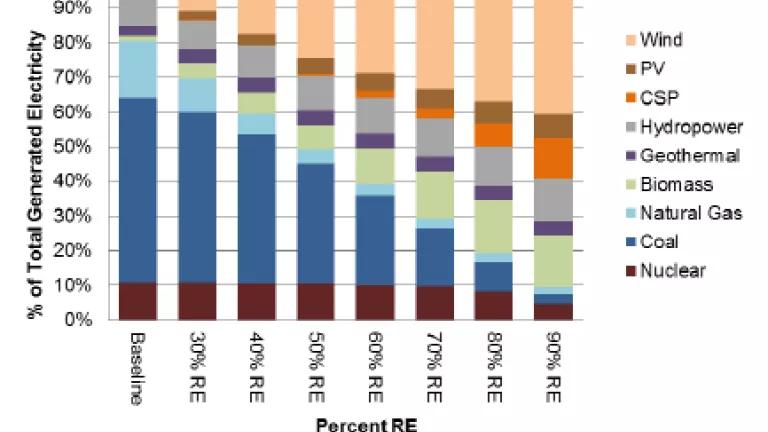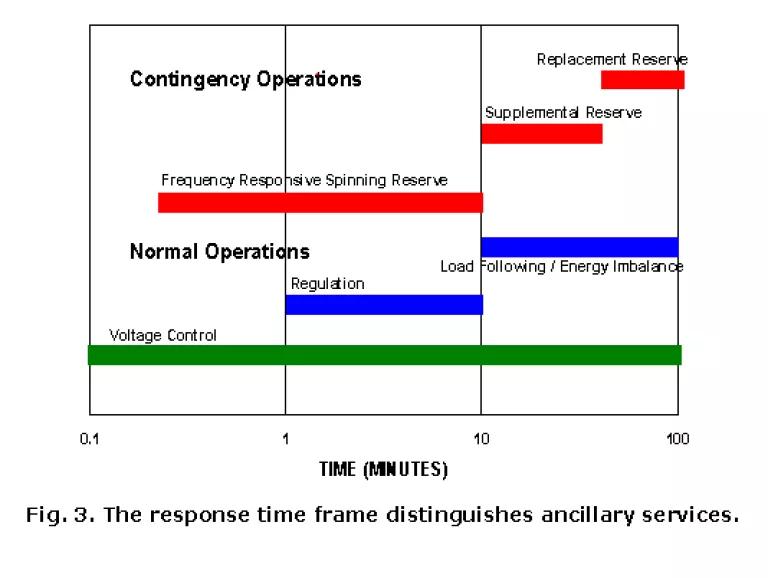FERC Affirms Support for Removing Market Barriers to Energy Storage, Other Clean Energy Resources

The Federal Energy Regulatory Commission (FERC) has once again demonstrated its commitment to removing unfair market barriers standing in the way of the grid flexibility necessary to incorporate high levels of renewable energy like wind and solar. It did so last week by issuing an order clarifying aspects of Order 784. Order 784, which FERC originally issued last year, tackled the tricky issue of whether and how to allow for competition in the sale of “ancillary services.” More about these services in a moment, but first some background -
The Changing Energy Markets’ Landscape
The 2013 Renewable Futures Study by the National Renewable Energy Laboratory (NREL) predicts that by 2050, 80 percent of the nation’s energy can come from wind and solar, and other renewable resources. In order to accommodate reliably so much clean energy, which can be variable due to unexpected weather, the study also predicts a need for significant, but feasible, increases in system flexibility. NREL writes that “system flexibility can be increased using a broad portfolio of supply- and demand-side options and will likely require technology advances, new operating procedures, evolved business models, and new market rules.”
The problem with existing energy market rules, in large part, is that they were designed around a generation portfolio consisting almost exclusively of central station, mostly fossil-fueled resources like coal and oil. Over time, the increasing presence of wind and solar power, demand response, distributed (onsite) generation and even energy efficiency have rendered the rules that govern energy markets outdated and, in some cases, discriminatory. The rules do not contemplate the operational characteristics of these emerging clean resources. As a result, these resources cannot compete to provide grid services even though they can often provide them more effectively and/or cheaper than traditional generators.
Under former FERC chair Jon Wellinghoff’s tenure (he left his post last November), FERC issued a series of legacy orders (including Orders 719, 745, and 755) that made real progress in addressing these increasingly unjust rules in wholesale energy, capacity and ancillary service markets. Order 784 and last week’s Order on Clarification represent the most recent of those orders. So, now back to ancillary services.
The Role of Ancillary Services
Ancillary services are grid “products” that transmission owners and customers must supply or procure, in addition to energy, in order to ensure the reliable delivery of energy. These services keep supply and demand balanced in all time frames (moment to moment, hour to hour, and beyond), assure start-up capability after black outs, and ensure reserves in case of emergency. Historically, coal, oil and nuclear generation have depended on large amounts of contingency reserves – the type of ancillary services necessary in case of the unexpected outage of a large power plant. The integration of renewable energy resources depends more on ancillary services that balance supply and demand on the grid when for example, the wind unexpectedly speeds up or slows down (see Brendan Kirby's time graph below). It turns out that energy storage and other demand-side resources can often react faster and switch directions quicker than large oil, coal or even gas generating units, therefore providing more flexibility to the system.

In many regions of the country there are no centralized markets for ancillary services. Transmission owners that are required to supply these services either self-supply or buy them via contract from another party. The nature of the bilateral markets in these regions, together with the nature of FERC’s rules around competition, have made it difficult for suppliers of energy storage and other demand-side resources to break into the market.
Order 784’s Reforms
Order 784 intends to break down these barriers by making it easier for energy storage and other resource owners to obtain the designation of “market based rate authority” necessary to compete for sales. The rule also requires all transmission-owning utilities to consider the “speed and accuracy” of resources providing ancillary services, a change that should mean good news for fast-acting and flexible energy storage. Finally, the rule clarifies some utility accounting procedures, making it easier to deploy and procure energy storage services. Last week’s Order on Clarification elucidated certain technical aspects of the rule’s implementation but did nothing to infringe upon the rule’s intent.
The rule represents a potentially significant contribution to the facilitation of NREL’s 80 percent renewable energy scenario. (See more about how we get there here). Happily, energy storage, demand response, and other demand-side resources not only help to integrate renewables, but can help avoid extending the lives of unnecessary marginal generation or building expensive transmission upgrades. FERC continues to do its part to set the stage for the transition to a clean and reliable transmission grid.
